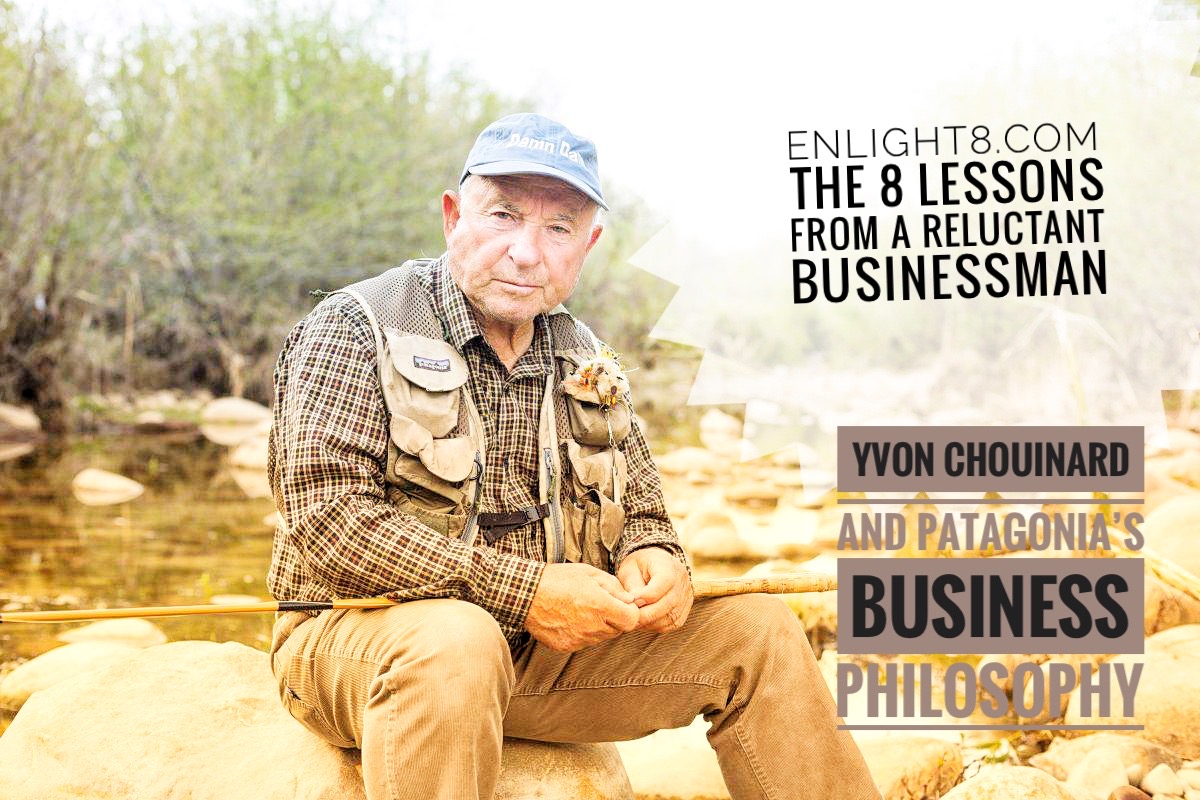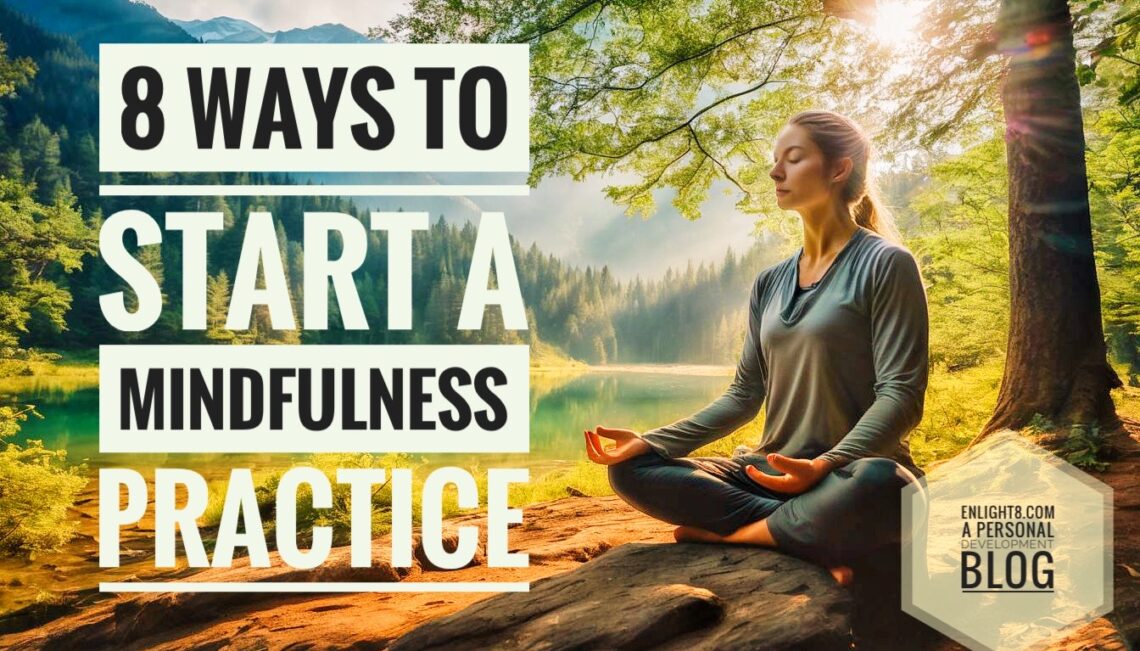
8 Easy Ways to Start a Mindfulness Practice
“In the contemplation of what you desire, you create what it is that you want to have for yourself.”
— Wayne Dyer
In our fast-paced lives, it’s easy to lose ourselves in a whirlwind of thoughts and emotions. We often find ourselves asking: Are we merely a stream of thoughts that flicker through our minds? As you take a moment to reflect on this question, pause and tune in to your feelings. Are you experiencing satisfaction or happiness, or are there shadowy feelings like anxiety, fear, or discontent lingering beneath the surface? Acknowledging these emotions is the first step toward understanding ourselves more deeply, and it sets the stage for a transformative journey into mindfulness.
Mindfulness is fundamentally about cultivating awareness and learning to distinguish our experiences without judgment. It invites us to step back from the constant chatter of our minds and observe our thoughts and feelings as they arise. By doing so, we begin to explore the possibility that we are not defined solely by our thoughts. Instead, we have the power to choose which thoughts we want to nurture and hold onto. Each moment offers a fresh opportunity to connect with our present experience and cultivate a deeper sense of clarity and peace. So, as we embark on this journey into mindfulness, let’s learn the art of truly being present and discovering who we are beyond our fleeting thoughts.
1. Be Present Now
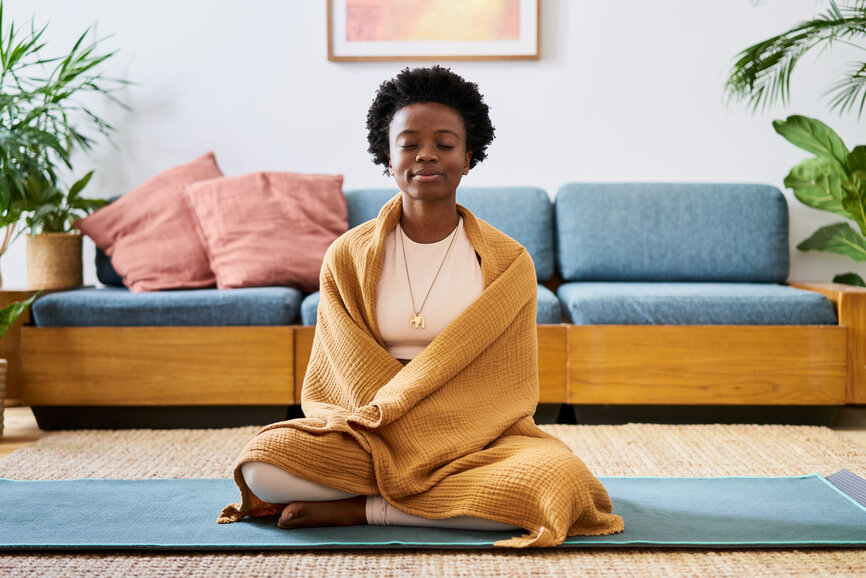
“Being present in the moment” is one of the easiest and most effective ways to practice mindfulness. At its heart, mindfulness means focusing on the current moment instead of getting lost in thoughts about the past or worrying about the future. By simply noticing where we are, what we’re doing, and how we feel—without judging those feelings—we begin to build awareness. Whether we’re washing dishes, walking to the store, or stuck in traffic, any moment can be an opportunity for us to be present. This intentional shift in focus helps calm our minds and brings clarity, making it a practical first step into mindfulness.
“Your beliefs become your thoughts,
Your thoughts become your words,
Your words become your actions,
Your actions become your habits,
Your habits become your values,
Your values become your destiny.”— Mahatma Gandhi
Practicing presence also helps us break free from living on autopilot, where days can go by without truly engaging with our experiences. Instead of reacting impulsively to everything around us, being present allows us to pause and respond thoughtfully. It deepens our connection with ourselves and our environment, making everyday experiences more vivid and meaningful. To get started, we don’t need special tools—just a willingness to slow down and pay attention to what’s happening. Over time, this simple practice can lower stress, improve focus, and help us achieve greater emotional balance.
2. Breathing Mindfulness

A simple breathing exercise is one of the easiest and most effective ways to start a mindfulness practice. We begin by finding a quiet place to sit or lie down comfortably. Closing our eyes, we take a moment to settle in. Then, we bring our attention to our breath. We inhale slowly through our noses for a count of four, hold that breath for a count of four, and exhale gently through our mouths for a count of four. We pause briefly before taking our next breath. This method is called “box breathing.” It can be repeated for several cycles, usually 3–5 minutes, or as long as it feels comfortable for us.
As we breathe, our minds may wander—that’s completely normal. When we notice this, we gently bring our focus back to our breath without frustration or judgment. Each time we return to our breath, we strengthen our awareness and begin building the habit of mindfulness. This practice calms our nervous system and trains our minds to stay anchored in the present moment. Over time, this simple breathing exercise can become a grounding ritual that helps us manage stress, increase focus, and cultivate inner peace.
If a breathing exercise is too complicated, simply observing our breathing for 2-3 minutes is an excellent start to mindfulness.
3. Mindfulness Walk

A mindfulness walk is an excellent way to connect with the present moment while moving our bodies. We don’t need special gear or a perfect setting—just a place to walk without rushing. As we begin, let’s take a moment to notice how our feet feel on the ground. We can pay attention to each step, how our legs move, and the rhythm of our breath. Instead of thinking about where we’re going or what to do later, we focus on what’s happening. Maybe we hear birds, feel the wind, or notice the colors around us.
As we walk, our minds might wander, and that’s okay. When it happens, we can gently bring our attention back to our steps or the feeling of the air around us. We’re not trying to clear our minds completely—we’re just noticing what’s going on without judgment. This kind of walking helps us slow down and appreciate the small things we usually miss. Over time, taking even a short mindful walk can help us feel calmer, more focused, and more connected to our surroundings.
4. Mindful Eating
Mindful eating is a simple way to slow down and enjoy our food. Instead of eating quickly or while distracted, we can take a moment to notice what’s on our plate—the colors, shapes, and smells. Before our first bite, we might pause to feel grateful for the meal. As we start eating, we can chew slowly and pay attention to the taste and texture of each bite. This process helps us stay present and makes the experience more satisfying.
While we eat, our goal isn’t to judge what we eat or how much—we just notice. We might realize how certain foods make us feel or when our bodies start feeling full. By eating mindfully, we can build a healthier relationship with food and learn to listen to our hunger and fullness signals. Mindful eating also breaks us from stress or multitasking, turning mealtime into a chance to relax and connect with ourselves. This practice may also involve chewing our food slowly and becoming more in tune with our body and actions.
5. Do A Body Scan

A body scan is a simple way to check in with ourselves and become more aware of our feelings. We can find a quiet spot to sit or lie down comfortably. If we feel okay doing that, we close our eyes and take a few slow, deep breaths. Then, we bring our attention to the top of our head and slowly move our focus down through our body—our face, neck, shoulders, chest, arms, stomach, legs, and feet. Moving through each area of our body, we notice tension, tingling, or other sensations without attempting to change anything.
If our minds wander during the scan, that’s normal. We notice the distraction and gently bring our attention back to the body part we were focusing on. The goal is not to fix anything, but just to be aware. This practice helps us feel more grounded and calm and teaches us to listen to our bodies with kindness. Over time, doing a body scan regularly can help us manage stress, sleep better, and feel more in tune with ourselves.
6. Mindful Journaling
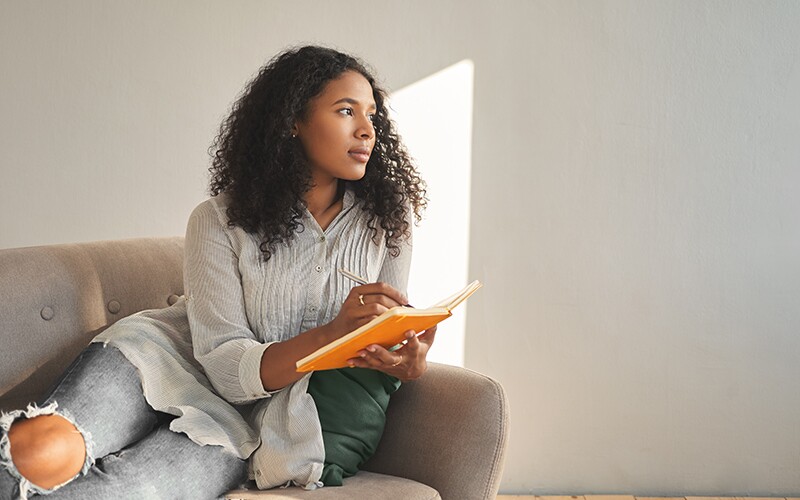
Mindfulness journaling is an excellent way to slow down and connect with our thoughts and feelings. It doesn’t have to be perfect or follow any strict rules. We can start by setting aside just a few minutes daily to write about what’s on our minds. We might ask ourselves, “How am I feeling right now?” or “What did I notice today?” Writing like this helps us become more aware of our emotions and patterns without judging ourselves.
As we journal, we might notice that we feel calmer and clearer-headed afterward. It allows us to pause, reflect, and be honest with ourselves in a safe space. We don’t need fancy notebooks or long entries—just a pen, paper, or even a notes app. What matters is that we take time to be present with our thoughts. Over time, this simple practice can help us understand ourselves better and build a more vigorous mindfulness habit.
7. Start a Mindfulness Morning Ritual
Starting our day with a mindfulness morning ritual can help us feel calm, focused, and ready for whatever comes next. It doesn’t have to be long or complicated. We can begin by setting aside five to ten minutes after waking up. Maybe we sit quietly, take a few deep breaths, stretch our bodies gently, or enjoy a warm drink without distractions. By doing one small thing with full attention, we give ourselves a peaceful start before the busyness of the day takes over.
This morning ritual is a chance to check how we feel—physically, mentally, and emotionally. We might set an intention for the day, like “stay patient” or “be kind to myself.” Over time, this mindful start can shape how we respond to stress and help us feel more balanced. It’s not about doing things perfectly—it’s about making space each morning to be present with ourselves before we step into the world.
8. Use a Mindfulness App
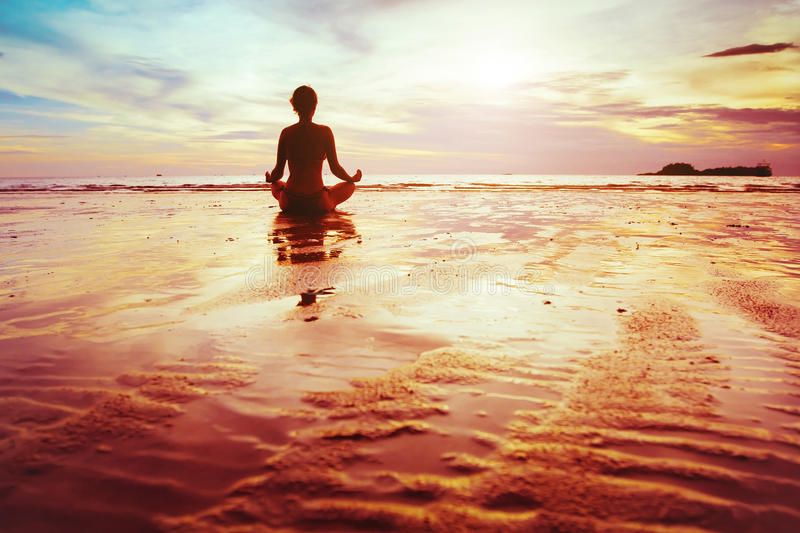
Using a mindfulness app can be a helpful way for us to get started with our practice, especially if we’re new to it. These apps provide guided meditations, breathing exercises, and reminders to help us stay on track. With so many options available, we can easily find one that fits our needs, whether a short session to start our day or a more extended meditation to relax before bed. Apps like Headspace, Calm, or Insight Timer offer a variety of tools that can help us learn the basics of mindfulness and gradually build our practice.
One of the benefits of using an app is that it can keep us consistent. With built-in reminders, we can set aside time each day to practice mindfulness, even when life gets busy. These apps can also help us track our progress and see how we improve over time. Following a guide can make the process feel less overwhelming, especially when we’re just starting out. Over time, using an app can support us in developing a regular mindfulness routine and make it easier to stay present in our everyday lives.


